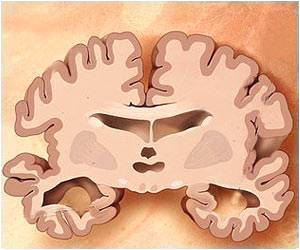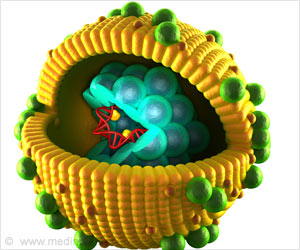Using PET imaging technology, researchers have, for the first time, seen hyperactive cancer genes activity inside breast tumours from outside the body in laboratory animals.
Using PET imaging technology, researchers have, for the first time, seen hyperactive cancer genes’ activity inside breast tumours from outside the body in laboratory animals.
Researchers at Jefferson Medical College and Jeffersons Kimmel Cancer in Philadelphia said that this technology might someday aid physicians to detect and classify cancer, enabling them to find cancerous breast tumours as early as possible, and determine the appropriate treatment.Led by Eric Wickstrom, Ph.D., and Mathew Thakur, Ph.D., the research team used a DNA ‘probe’ – a modified nuclear medicine agent – to detect the hyperactivity of CCND1, a common breast cancer gene. The gene is copied thousands of times in most breast cancer cells. The high concentration makes CCND1 copies easier to image with the genetic PET probe.
Researchers discovered a much higher concentration of the cancer gene activity in estrogen receptor-positive breast tumours in mice than in normal tissue.
“Less than one-fourth of lumps found in mammograms are really cancer. Our new technique will let us see what is really going on in a suspicious lump. We will see if a lump is malignant or something safe,” said Dr. Wickstrom, professor of Biochemistry and Molecular Biology at Jefferson Medical College of Thomas Jefferson University.
Dr. Thakur, professor of Radiology and Radiation Oncology at Jefferson Medical College, said: “Patients with benign lumps could avoid invasive procedures if active cancer genes could be identified from outside the body. Observing the cancer gene activity of a breast tumor will permit physicians to determine the best way to treat it.”
The new technique to visualize sites of cancer gene activity, which the researchers hailed as radiohybridization imaging (RHI), might help physicians find out whether lesions found in mammograms are cancerous or non-cancerous without a biopsy. The genetic imaging agents are intended to find cancer gene activity as quickly as possible and guide the choice of therapy based on which genes are most active.
Advertisement
“When suspect lumps are discovered, biopsies are necessary to determine if the lumps are cancerous. However, more than three-fourths of the lumps are found to be benign. Mammography, an invaluable screening technique, sees shapes but not gene activity. Genetic PET scanning is a minimally invasive, sensitive and specific technique that might detect cancers with high efficiency in adult women and young women without breast compression,” Dr. Thakur said.
“Early detection saves lives. Several other cancers show characteristic activated genes that we might be able to use for early diagnosis, such as pancreatic cancer, prostate cancer, lymphoma, and colon cancer,” Dr. Thakur said.
Researchers are also exploring genetic agents designed for magnetic resonance imaging and fluorescence imaging.
The new study is published in the Journal of Nuclear Medicine.
Source-ANI
KAR/M












